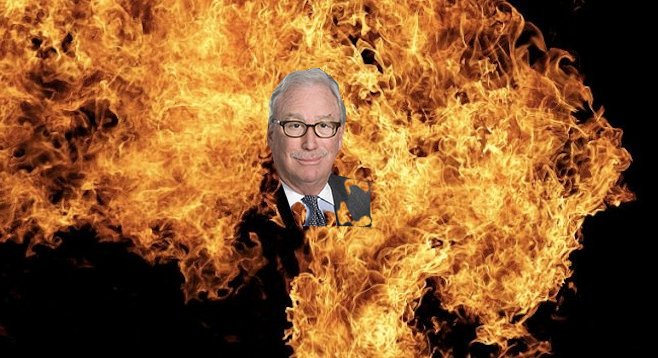 Facebook
Facebook
 X
X
 Instagram
Instagram
 TikTok
TikTok
 Youtube
Youtube

The publication SFGate revealed yesterday (July 26) just how cozy officials of the California Public Utilities Commission (CPUC) are with the utilities they are supposed to regulate.
The City of San Bruno, which suffered a 2010 gas-pipeline explosion that killed eight people and destroyed 38 homes, sued the CPUC for not releasing the emails. San Bruno has justifiably blasted the CPUC for its lax regulation of the offending utility, Pacific Gas & Electric (PG&E).
As a result of the suit, 7000 previously protected emails were released. San Bruno officials say they are proof of a "cozy relationship" between the CPUC and the Bay Area utility. (The National Transportation Safety Board noted there was a "culture of complacency" at the regulatory body that was supposed to ensure that PG&E operated pipelines safely.)
These emails show more than complacency. In a series of emails, the chief of staff to CPUC president Michael Peevey wrote a PG&E official on how the company could handle a demand from San Bruno. The chief of staff told PG&E to send San Bruno a "sweet note," and tell the city that the matter in dispute was moot. "And then wait for them to throw a fit," said the chief of staff. The PG&E official replied, "Love you."
On another occasion, Peevey told PG&E's vice president of regulatory affairs that he had erred in saying publicly that the company expected to be criminally charged. "Anticipating all this only meant the public got to read two big stories rather than one,” Peevey told the executive. "I think this was inept." Why should the head of the CPUC be worried about a utility's public relations acuity? It's obvious why.
San Bruno says PG&E had sent confidential financial information to the CPUC, apparently trying to show that a financial penalty for the San Bruno disaster would hurt the company.


The publication SFGate revealed yesterday (July 26) just how cozy officials of the California Public Utilities Commission (CPUC) are with the utilities they are supposed to regulate.
The City of San Bruno, which suffered a 2010 gas-pipeline explosion that killed eight people and destroyed 38 homes, sued the CPUC for not releasing the emails. San Bruno has justifiably blasted the CPUC for its lax regulation of the offending utility, Pacific Gas & Electric (PG&E).
As a result of the suit, 7000 previously protected emails were released. San Bruno officials say they are proof of a "cozy relationship" between the CPUC and the Bay Area utility. (The National Transportation Safety Board noted there was a "culture of complacency" at the regulatory body that was supposed to ensure that PG&E operated pipelines safely.)
These emails show more than complacency. In a series of emails, the chief of staff to CPUC president Michael Peevey wrote a PG&E official on how the company could handle a demand from San Bruno. The chief of staff told PG&E to send San Bruno a "sweet note," and tell the city that the matter in dispute was moot. "And then wait for them to throw a fit," said the chief of staff. The PG&E official replied, "Love you."
On another occasion, Peevey told PG&E's vice president of regulatory affairs that he had erred in saying publicly that the company expected to be criminally charged. "Anticipating all this only meant the public got to read two big stories rather than one,” Peevey told the executive. "I think this was inept." Why should the head of the CPUC be worried about a utility's public relations acuity? It's obvious why.
San Bruno says PG&E had sent confidential financial information to the CPUC, apparently trying to show that a financial penalty for the San Bruno disaster would hurt the company.
Comments